
How to Use Customer Feedback to Create a Successful Product Launch
Utilizing customer feedback is crucial in fine-tuning your product to meet market trends and customer needs, setting the stage for a successful product launch. By engaging with customer insights, you can identify and prioritize features that resonate with your target audience, ensuring your product fulfills current demands and stands out in a competitive landscape.
This approach allows you to build a product that customers feel heard and valued in its creation, which can significantly boost your product's reception and longevity in the market. To effectively integrate customer feedback into your product development, consider exploring customer feedback surveys and product idea validation to strengthen your launch strategy.
What is a Product Launch?
A product launch introduces a new or updated product to the market. This event is critical for making the product available for customers to purchase. To achieve a successful launch, you need to perform thorough market research. Understanding market trends, customer needs, and the competitive landscape helps you tailor your product to meet customer demands effectively.
You should define your target audience to create a buyer persona. This persona is a detailed profile of an ideal customer, guiding your product's development and marketing. Knowing who you are selling to ensures you can craft messages that resonate and compel action.
When considering the competition, it's essential to identify how your product stands out. Effective positioning places your product favorably in the minds of consumers relative to competing products. It articulates the unique benefits and features that make your offering the preferred choice.
Product Launch Checklist
When preparing for a product launch, it's essential that you meticulously plan your approach. Your market research should inform every decision, ensuring you've thoroughly analyzed customer feedback and integrated their insights into the development process.
Start by verifying that you've defined your target audience. Knowing your audience affects every launch aspect, from marketing strategies to product features. Create detailed buyer personas to understand better and cater to the needs and desires of your potential customers.
Next, assess the competition. What are they offering, and how does your product differ? Your product's positioning in the market should emphasize its unique value proposition. You want to articulate why your product is the preferred option.
- Conduct market research to identify customer needs and preferences.
- Define the target audience and establish clear buyer personas.
- Analyze your competition to understand your product's place in the market.
- Craft a positioning statement that outlines your product’s competitive edge.
Explicitly cover these main steps in your product launch plan:
- Validate Product Concept: Incorporate customer feedback to refine your product.
- Prototyping and Feedback: Test your product with real users and iterate based on their suggestions.
- Define Your Launch Goals: Set clear and measurable objectives for your launch.
- Prepare Your Marketing Collateral: Use the language and channels that resonate with your buyer personas.
- Launch Timeline: Develop a timeline that outlines all key launch activities and deadlines.
- Post-Launch: Plan for customer support, gather post-launch feedback, and be ready to adapt.
Remember, your customer's feedback is an invaluable asset. Keep your processes adaptable, and never stop listening to your audience. Their insights guide the continuous evolution and success of your product.
How to use customer feedback to improve your product launch planning?
Gathering and utilizing customer feedback is essential in honing the focus of your product launch. It allows you to fine-tune the product and the launch strategy to meet market expectations and customer needs better.
1. Make it easy for customers to provide feedback
Ensure that providing feedback is simple and convenient for your customers. Create multiple channels such as surveys, focus groups, and online forums that cater to their preferences. An easy feedback process encourages more responses, providing a broader data set to analyze. Provide clear instructions and make it simple for customers to give feedback through multiple channels, such as email, phone, or online survey forms.
- Surveys: Deploy strategic surveys to establish a solid connection with your audience. Use tools like SurveyMonkey or Google Forms to gather structured feedback, asking open-ended customer feedback questions.

- Customer Feedback Portals: Create a centralized place for product feedback to keep track of different types of customer feedback and improve SaaS products while listening to their customers. Rapidr helps SaaS companies be more customer-centric by consolidating feedback across different apps, prioritizing requests, having a discourse with customers, and closing the feedback loop during a product launch.
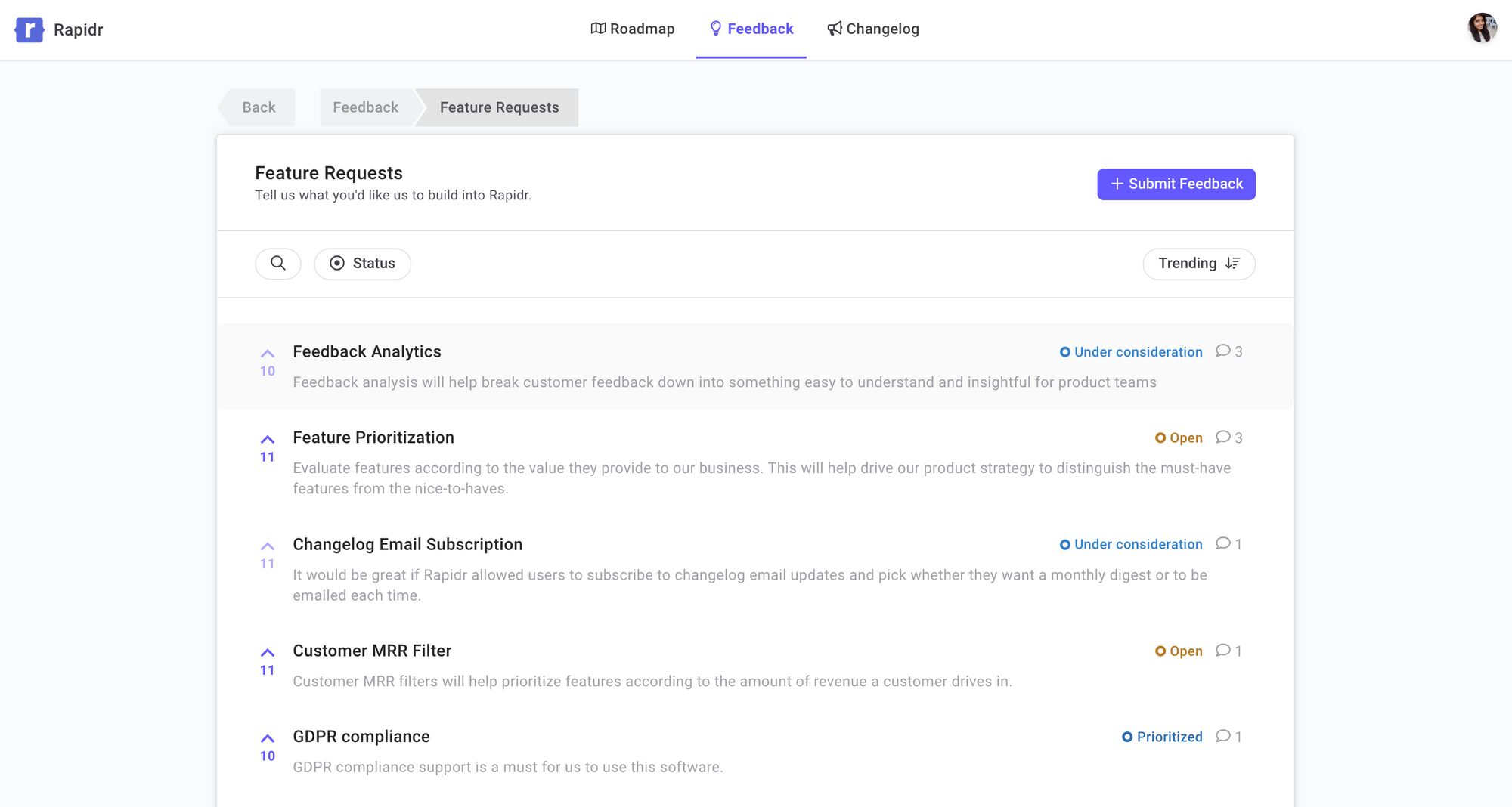
- Customer Support: Analyze tickets and chat logs for common issues, pain points, or feature requests. Ensure an internal team feedback system is set up for this valuable information to be collected from customer-facing teams and shared with the product team.
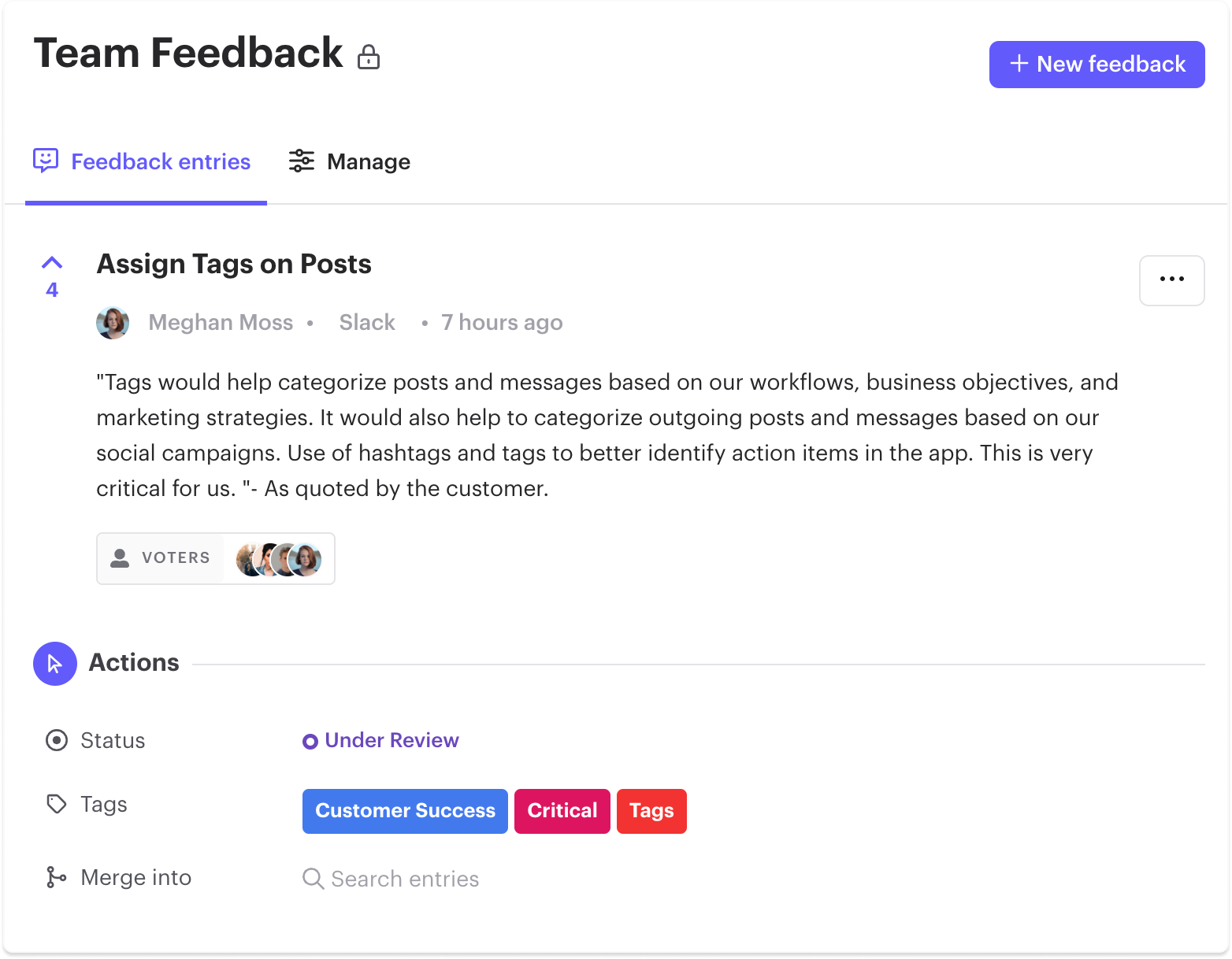
- Social Media: Monitor your social media channels for unsolicited feedback. This will give you a clear view of common trends and user sentiment. Platforms like Twitter, Facebook, and Instagram are ripe for candid feedback and discussions regarding user challenges and desires.
- Product Reviews: Check G2, Capterra, Trustpilot reviews.
- Direct Feedback: Encourage direct communication through email or website feedback forms directly integrated within your software with feedback management systems.
- Feedback Widgets: Feedback widgets offered by Rapidr are a subtle way to ask for feedback that doesn't interrupt the user experience but still helps you listen to the voice of the customer. In-app feedback widgets could always be present on the side of the page, and when a user clicks on it, a feedback form can pop up to submit feedback right then and there.
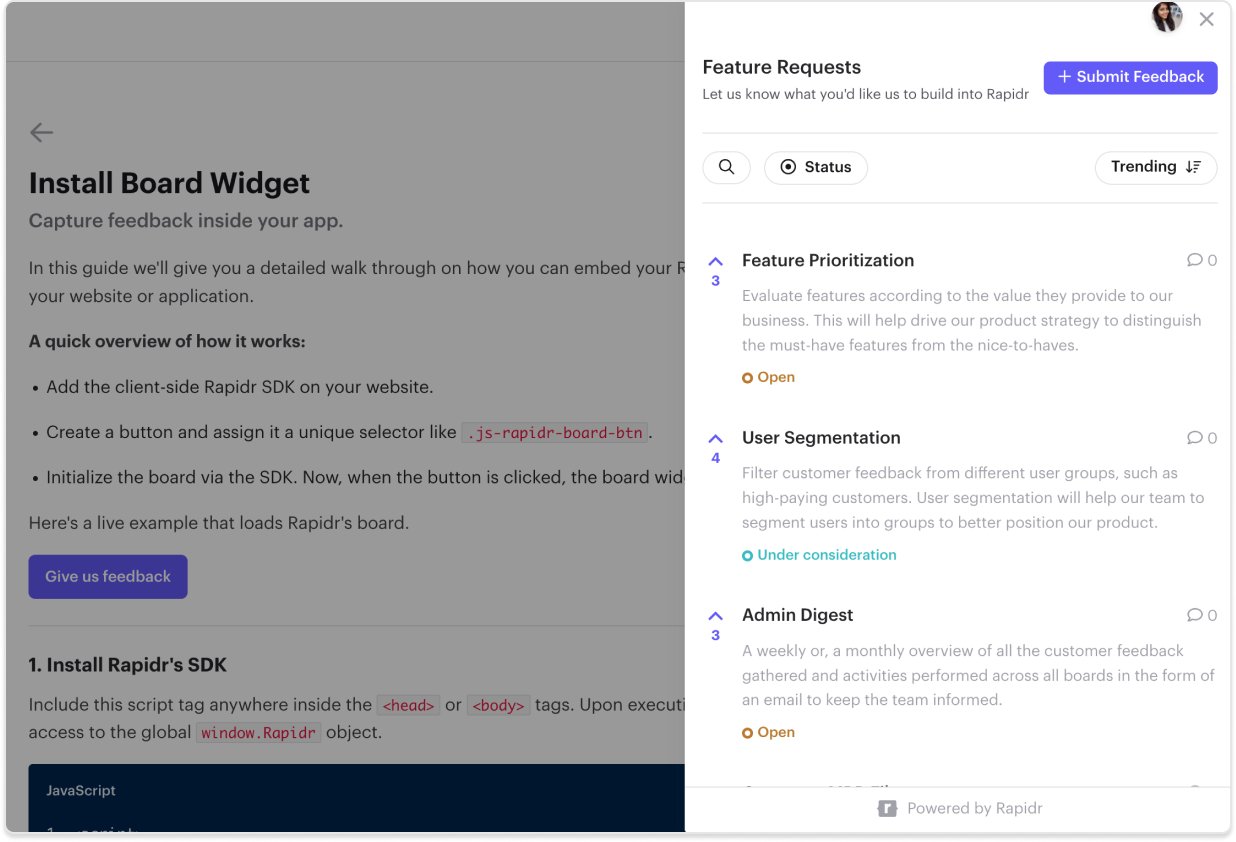
2. Use a structured approach to manage feedback
Develop a systematized method for collecting and analyzing feedback. This might include regular surveys with specific questions about product features, user experience, and potential improvements. Structured feedback can yield actionable insights for the product development phases leading up to your launch date. Publicly acknowledge all positive or negative feedback to show your commitment to customer satisfaction, as it is impossible to say yes to all ideas.
Organize and Analyze Feedback
- Categorize Feedback: Group feedback into categories such as usability, features, performance, and customer support and create user segments.
- Identify Patterns: Look for recurring themes and common issues across different feedback sources.
- Sentiment Analysis: Use sentiment analysis tools to understand the emotional tone behind the feedback.
- Quantify Feedback: Determine the frequency of specific issues or requests to understand their prevalence.
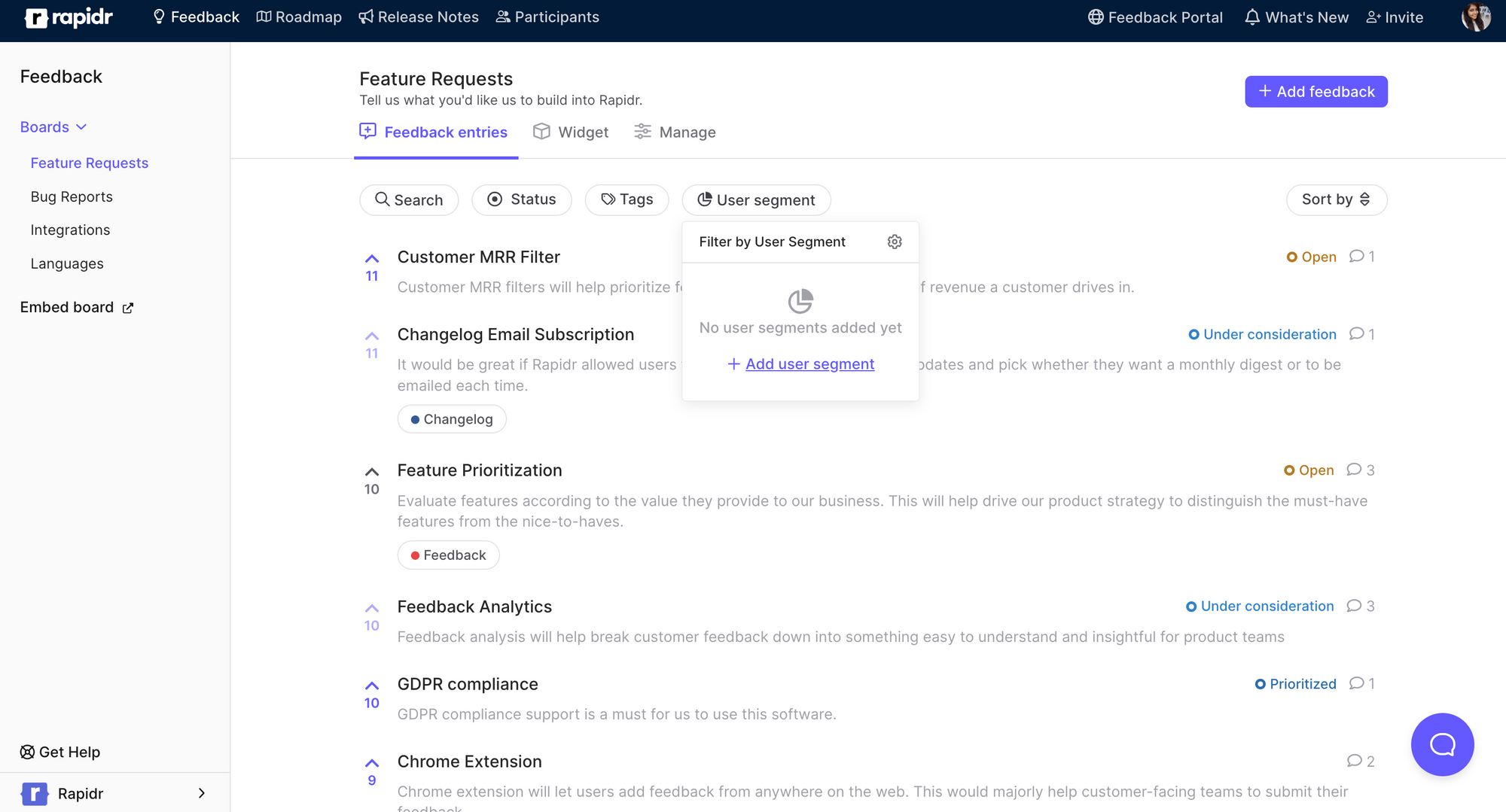
3. Act on feedback quickly
Rapid response to feedback signifies to your customers that their opinions are valued. Prioritize features and implement changes that can immediately impact the product's effectiveness and customers' perception pre-launch. Address any issues or concerns that customers raise as soon as possible. This shows that you value their input and are committed to making improvements.
Prioritize Updates
- Impact vs. Effort Matrix: Create a matrix to evaluate the potential impact of each update against the effort required to implement it.
- Customer Segmentation: Consider the needs of different user segments (e.g., new users, power users, enterprise clients).
- Alignment with Business Goals: Ensure the updates align with your business strategy and product vision.
- Competitive Analysis: Consider how the updates position your product relative to competitors.

4. Communicate with customers during the beta testing process
Beta testing is a critical pre-launch phase. It's an opportunity to communicate openly with early adopters. Transparent communication about what is being tested, fixed, or changed helps nurture trust and positively influence customer satisfaction and loyalty. Keep customers informed about the beta testing progress and new product launch. This helps to build trust and keeps customers engaged.
- Use feedback to identify bugs and usability issues: During beta testing, use customer feedback to identify any bugs or usability issues with the product. This will help improve the product's overall quality before its official launch.
- Use feedback to validate product features: Use customer feedback to validate that the product features meet the needs of the target audience. This will help ensure that the product is well-received by customers upon launch.
- Use feedback to refine the product: Use customer feedback to refine the product and make necessary changes before the official launch. This will help improve customer satisfaction and increase the product's chances of success.
5. Use feedback to inform product development
Feedback can reveal unforeseen flaws or potential enhancements that may otherwise be overlooked. This can directly affect market share and sales post-launch by ensuring the product truly resonates with the target audience.
Incorporate feedback into your product development process to ensure your final product meets customer expectations.
- Create a feedback loop where all insights are evaluated and prioritized based on their potential impact on user satisfaction and product success.
- Customer feedback should lead to action items for your development team, ranging from minor tweaks to significant overhauls.
- Organize the feedback thematically and present it to your product teams regularly. Ensure that your teams are aligned on customer insights' value and committed to integrating them into their workflows.
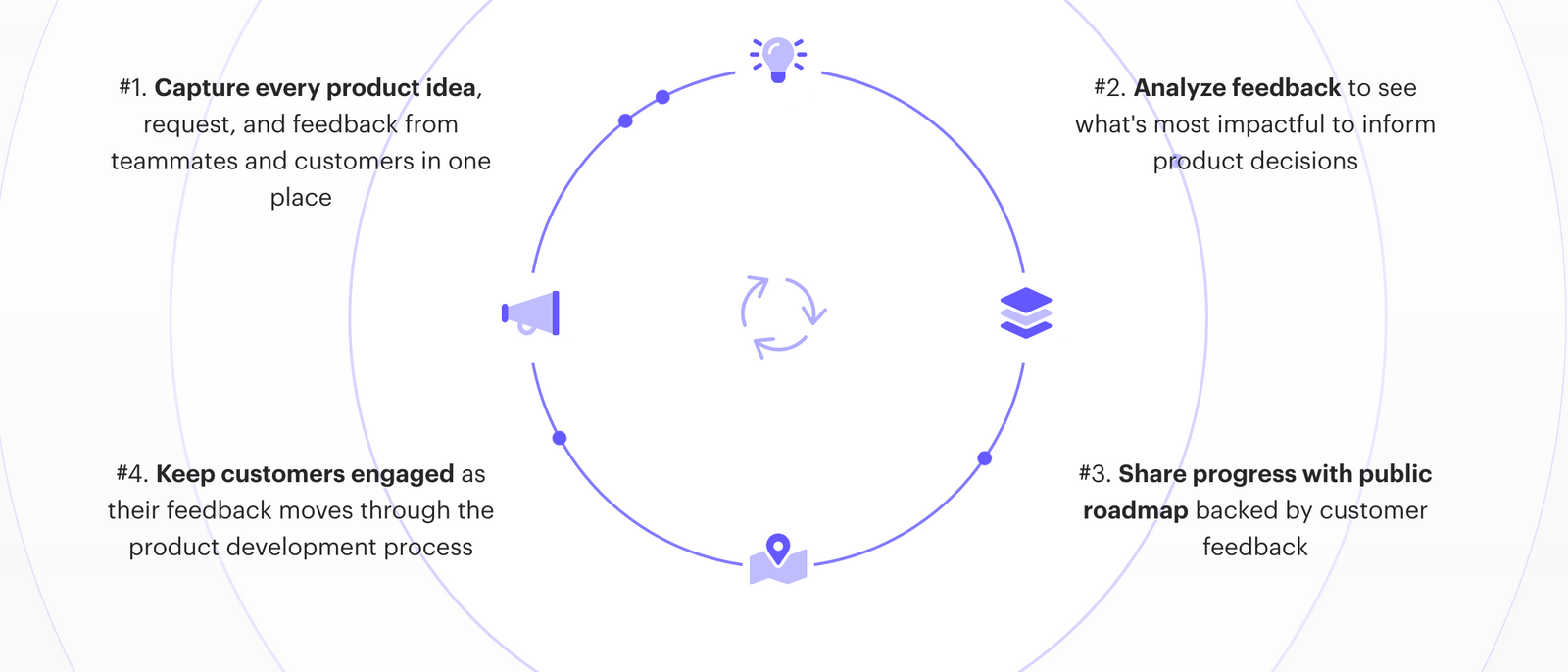
Develop a Product Roadmap
- Short-Term vs. Long-Term Goals: Distinguish between quick wins and long-term projects.
- Release Plan: Define a release schedule (e.g., monthly, quarterly) for rolling out updates with a public roadmap offered by Rapidr.
- Resource Allocation: Allocate resources (e.g., development, design, QA) based on the priority of updates.
- Beta Testing: Plan for beta testing phases to gather early feedback and make necessary adjustments before a full rollout.
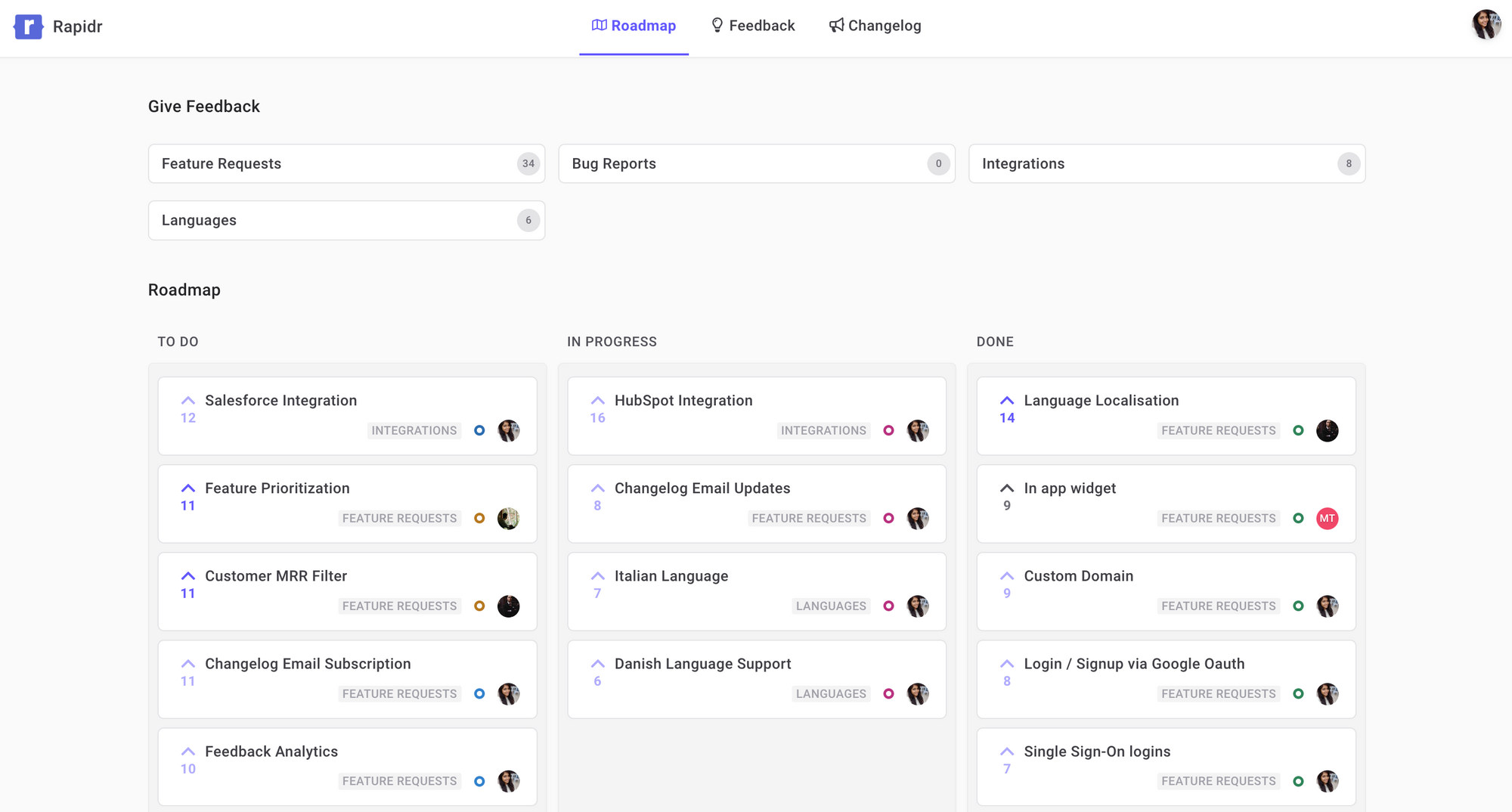
6. Use feedback to create marketing materials
Harness customer testimonials and data-driven results from feedback to craft compelling marketing materials. Authentic customer experiences are powerful; they can enhance promotional content and contribute to a more successful product launch.
- Use customer feedback to create marketing campaigns accurately reflecting the product's benefits. This will help to build anticipation and interest in the product before its launch.
- Use customer feedback to inform the product's pricing. This will help ensure the product is competitively priced and appeals to the target audience.
7. Use customer feedback to improve customer satisfaction and customer service
Post-launch, continue gathering feedback to elevate customer service and become more customer-centric. Customer satisfaction is not just about the product but also the support received. Attend to concerns and praises and use customer experience strategies to build a strong foundation for future sales and loyalty.
Use customer feedback to identify areas for improvement in the product and customer service. This will help your customer success teams to increase customer satisfaction and loyalty and ensure that customers have a positive experience with the product and are more likely to become repeat customers.
Evaluate and Iterate
- User Feedback: Gather feedback on the new updates to understand their impact and identify any issues.
- KPIs: Track key performance indicators (KPIs) such as user satisfaction scores, engagement metrics, and support ticket volume.
- Continuous Improvement: Use the insights gained to refine existing features and plan for future updates.
8. Use feedback to plan for future product updates
Use customer feedback to plan for future product updates. This will help ensure that the product meets customers' evolving needs.
- Internal Communication: Keep your team informed about the planned updates, timelines, and their roles.
- Customer Communication: Inform customers about upcoming changes, how their feedback is used, and what benefits they can expect.
- Changelogs: Publish detailed changelogs with each update to highlight new features, improvements, and bug fixes.
When you release new features or updates, reach out to users to see how they find them. Clear communication is vital to cohesive development, even if it means saying no to some feature requests. Following up shows that you act on customer feedback, strengthening loyalty and ensuring your company remains customer-centric.

Rapidr: The Best Customer Feedback Management Software For Your Product Launch
A well-timed and strategically planned product launch can significantly impact your product's success in the market. A cohesive plan combining market research, understanding your target audience, buyer persona development, studying the competition, and strong product positioning is your blueprint for launching products poised to thrive.
While many customer feedback management tools help you capture, organize, and prioritize feedback during product launches, consider the one that enables you to uncover the insights from the feedback and shape your product strategy.
1. Centralized and organized by category: The first step in solving this is to organize feedback in a central location. You’ll likely receive feedback from various channels and integrations like emails, Slack channels, support inboxes, forms, and in-app widgets.
2. Easily accessible to everyone: Centralizing all feedback data in one place, which can be easily accessed, will ensure that critical feedback doesn’t get lost and will allow you to understand what to prioritize.
3. Shared across internal teams: A central hub lets customer-facing teams access and submit feedback easily. A dedicated system will also help plan regular meetups with teams to discuss customer feedback and determine how to use it to define product strategy.
4. Prioritize and analyze feedback: Prioritize features and rank feature requests and tasks based on impact to make feedback-driven decisions. Remember, it's not just about collecting feedback. The real power lies in analyzing this qualitative data and implementing actionable changes that genuinely reflect your customers' desires and pain points. This ongoing listening, learning, and improving cycle sets successful companies apart.
With Rapidr, you can collect, analyze, and organize feedback and engage with customers as their feedback moves through the development process. Other notable features include collecting feedback via widgets, slicing and dicing feedback, embedding a roadmap into your product, and closing the feedback loop.
Sign up and set up a complete customer feedback management system to make your product launch successful.

